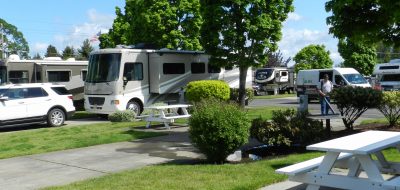One of the considerations when buying a recreational vehicle is where to store it when it is not in use. Many owners are able to park in their driveway or in an outbuilding on their property. There are advantages to this, which include the ability to keep the unit plugged into an electrical outlet, generally better security being at the owner’s home, the owner can clean and work on it at any time and, of course, no monthly storage fees.
However, much of this depends on the availability of space at the residence, the size of the RV, and that no bylaws prevent such storage.
If at-home storage is not possible, a suitable place must be located. The majority of facilities that offer such services provide outdoor parking only with no provision for any electrical power. Even those that may have indoor storage, heated or not, generally offer no shore power, even 15/20 amperes. History has proven that allowing electric power in an RV or boat storage location does not work. It has been abused by those few that plug in heaters, etc. This would be a liability and a possible fire hazard.
So, not only do you need to winterize your rig, if you are in an area that experiences freezing conditions, but also tend to the batteries. In some cases, the disconnecting of the cables from the batteries may get you by, but removing them and storing them at home may be a better solution. Either way, a top up charge should be applied every couple of months to offset the inherit voltage loss. The specific care for the batteries vary depending on the type (ie: Wet Cell, AGM) and the manufacturer’s recommendations.
The ideal storage is probably climate controlled indoor, but the additional cost is usually substantially more.
As well as the normal RV winterizing required for your area’s environment, here are some additional layup storage tips.
- Clean out the refrigerator and block the door open to prevent mold forming.
- Slightly over inflate the RV tires, about 10% over normal pressure. This will help offset the inherit pressure loss over time due to oxygen monocles migrating through the tire casing.
- On concrete. place vapor shield in front of all tires and drive onto them. Best product is the inexpensive thin kitchen cutting sheets. This protects the tire at the point of contact. Concrete can leach some of the tire’s composition over time.
- Photograph your RV in storage from all sides. This will be an aid for you should damage occur while in storage.
- Remove or disconnect all batteries. Do not forget the chassis batteries. If left connected, they will be drawn down by even idle system components.
Well, you get the idea, storing an RV is just not that simple. However, doing it right will assure it is ready to use when you are.









